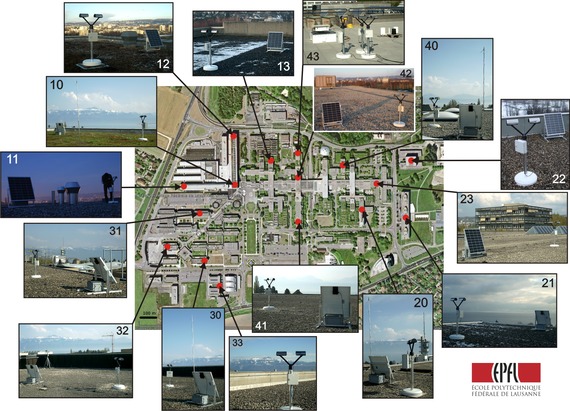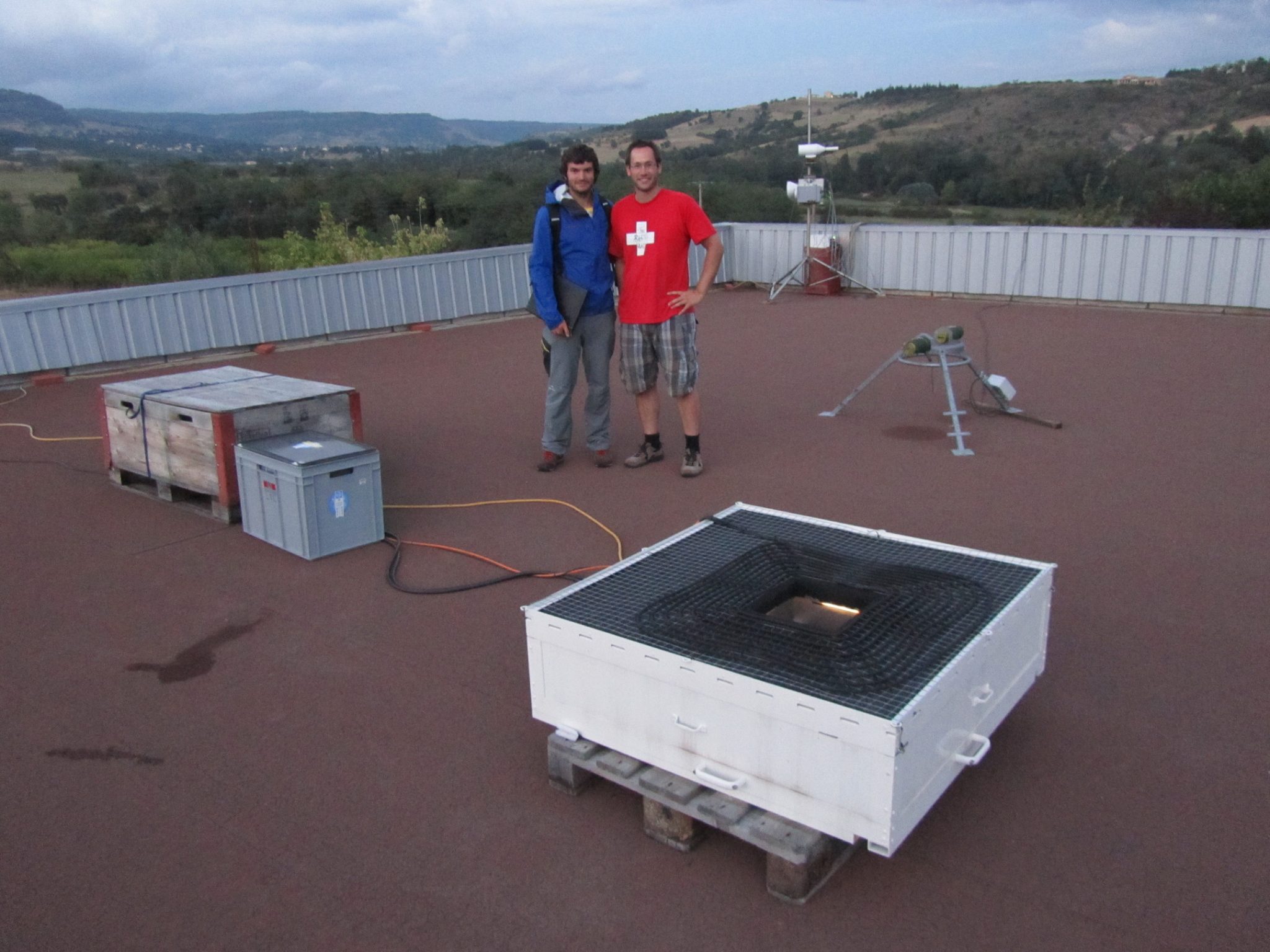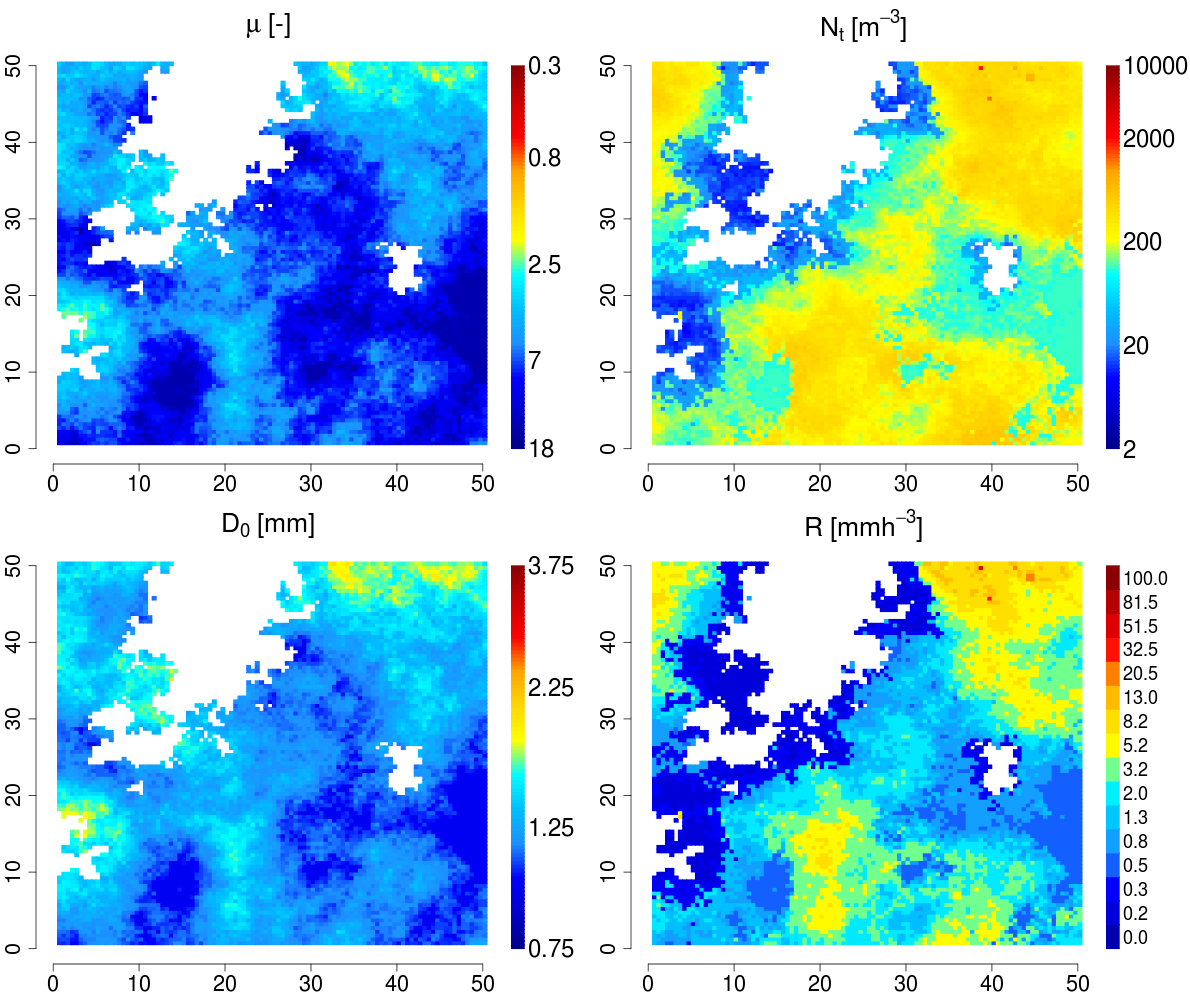The rain drop size distribution (DSD) is of crucial importance for the quantitative interpretation of measurements from weather radar systems. For instance, the coefficients of the Z-R relationship are influenced by the DSD. The variability of the DSD results from the complex interactions between atmospheric dynamics and cloud microphysics. The variability of the DSD at small spatial (up to a few km) and temporal (up to a few h) scales is neither well documented nor understood, in particular in the alpine environment. Our main objective is to monitor, quantify and characterize the variability of the DSD at such small scales as well as its influence on radar rain-rate estimation.
Experimental approach
EPFL campus experiment (2009-2011)
A wireless network of 16 Parsivels (optical disdrometers from OTT) has been deployed over EPFL campus in order to quantify the spatial and temporal variability of the DSD over a typical operational radar pixel (about 1×1 km2). The observed DSD spectra has allowed to investigate up- and down-scaling between point measurements from disdrometers (or rain gauges) and integrated measurements from operational weather radars.

Raw and processed DSD data for the entire experiment are available on a NASA data server related to GPM (link)
Gallery of pictures about the deployment of the EPFL network
Gallery of pictures about the deployment of an altitude transect of Parsivels in Davos
LTE people involved: J. Jaffrain, A. Studzinski
HyMeX (Aug. 2012 – )
7 of the Parsivels previously used during the EPFL campus experiment have been deployed in the Hpiconet located in Ardèche, France, for the HyMeX campaign. the objective there is to investigate the microstructure of intense Meditteranean rainfall.
The map below indicates the locations of the disdrometers (click on the red dots to get a picture of the sensor).
The 2D video-disdrometer (2DVD) was also deployed (at Le Pradel) close to a dual-beam spectro-pluviometer from LATMOS (L. Barthès) and a micro-rain radar (MRR) and a Parsivel from LaMP (J. Van Baelen).

LTE people involved: T. Raupach, J. Grazioli.
Simulation approach
The capability to simulate statistically homogeneous realistic DSD fields in 2D provides a useful framework to investigate many sources of uncertainty affecting the retrieval of rainfall variables using remote sensing techniques (e.g., attenuation, non-uniform beam filling, rain-rate retrieval). A stochastic simulator based on geostatistical tools, has been developed to generate intermittent 2D fields of DSDs correlated in sapce and time.

This simulator has been further developed into a stochastic disaggregator to downscale rainfall fields (rain rate, reflectivity, liqui water content,…) into high resolution DSD fields.
Click here to see an animation of simulated fields (2.7 MB)
LTE people involved: M. Schleiss.